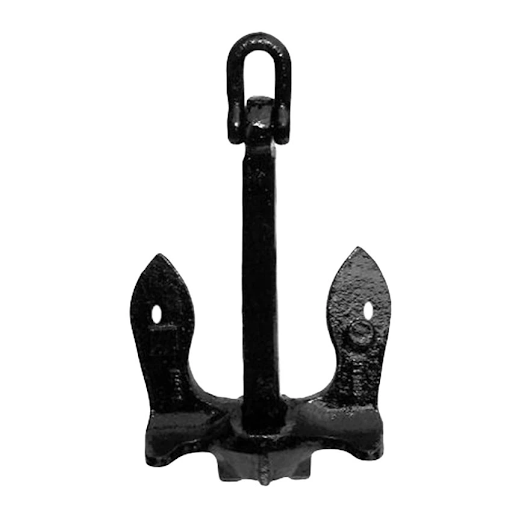For centuries, anchors have symbolized strength, stability, and safety at sea. From wooden stocks of the early sailing era to advanced steel designs in modern fleets, the evolution of the anchor reflects the broader story of maritime innovation. Among the most significant advancements in this journey is the stockless anchor, a design that has revolutionized how ships maintain their hold in shifting seabeds and challenging conditions.
Behind every reliable anchor lies another essential element: a trusted marine stockless anchor supplier who understands the engineering, performance, and safety standards that modern vessels demand. The collaboration between technology and expertise ensures that every anchor not only holds a vessel in place but does so efficiently, safely, and reliably.
1. The Evolution of Anchoring Systems
Anchors have come a long way since the days of wooden flukes and iron chains. As ships grew larger and voyages longer, the maritime world demanded stronger, more versatile solutions. Early anchors used horizontal stocks to align the flukes, ensuring proper seabed penetration. However, these designs proved bulky and difficult to handle, especially on steel-hulled ships.
The development of the stockless anchor in the late 19th century marked a turning point in naval architecture. Its design removed the need for a stock, simplifying storage, improving handling, and offering greater compatibility with modern windlass systems. This innovation made anchoring faster, safer, and more adaptable to varying seabed conditions.
2. Understanding the Stockless Anchor Design
The stockless anchor features two pivoting flukes and a solid shank, engineered for optimal balance and grip. When dropped, the flukes dig into the seabed while the shank aligns naturally under tension, ensuring a secure hold. This mechanism provides superior holding power while maintaining compactness and ease of use.
Modern designs, such as the classic anchor hall type, are built from high-tensile steel to resist extreme stress and corrosion. These anchors are suitable for a wide range of vessels, from cargo ships and tankers to offshore platforms and naval vessels.
The ability of the anchor to perform across diverse seabed materials, sand, clay, or gravel, makes it indispensable in modern shipping. Its strength, efficiency, and simplicity have cemented it as the global standard for maritime anchoring.
3. Why Stockless Anchors Dominate Modern Shipping
The anchor hall type gained worldwide acceptance for several reasons:
- Ease of stowage: It fits snugly into hawse pipes, eliminating the need for complex storage systems.
- Operational efficiency: The anchor can be deployed and retrieved faster, saving time during docking and departure.
- Reduced maintenance: Simplified design means fewer moving parts and lower upkeep costs.
- Durability: Its robust build withstands immense loads and years of exposure to seawater.
Today, nearly every major vessel, from commercial liners to offshore rigs, relies on stockless anchors due to these advantages. They represent the perfect balance of tradition and innovation.
4. The Role of a Trusted Marine Supplier
Having the right design is only part of the equation. The true reliability of an anchor depends on the quality of its materials, the precision of its manufacturing, and the integrity of its certification. That’s where a skilled marine stockless anchor supplier becomes invaluable.
An experienced supplier ensures that:
- Every anchor is manufactured to meet international standards such as ABS, DNV, or Lloyd’s Register.
- Products are tested for load-bearing, fluke penetration, and corrosion resistance.
- Clients receive technical support for installation, maintenance, and replacement.
- Each anchor is matched perfectly to the vessel’s tonnage, hull design, and operational environment.
Working with a reliable supplier ensures you are not only buying equipment but investing in safety, longevity, and peace of mind.
5. How Technology Has Refined Modern Anchors
Modern anchor manufacturing now integrates advanced metallurgy, 3D modeling, and computer-aided design to optimize weight distribution and performance. Enhanced coatings and galvanization techniques extend service life, reducing the risk of corrosion and structural fatigue.
Some manufacturers also use non-destructive testing (NDT) and ultrasonic inspection to verify integrity at a microscopic level. These technological advancements mean that each anchor hall model today is far superior in reliability compared to older designs.
Innovation continues to refine even the most traditional components of marine systems, proving that progress in shipping is built upon centuries of engineering wisdom.
6. Selecting the Right Stockless Anchor for Your Vessel
Every vessel has unique requirements depending on size, type, and route. Selecting the correct stockless anchor involves understanding your ship’s displacement, typical anchoring depth, and seabed conditions.
A professional supplier will help determine:
- The optimal anchor weight and fluke design for your ship.
- The ideal chain size and shackle compatibility.
- Certification requirements based on the flag state or the classification society.
- Maintenance intervals and corrosion prevention strategies.
This consultative approach ensures maximum holding power and minimum operational disruption, keeping your fleet compliant and secure.
7. The Connection Between Anchors and Operational Safety
Anchoring isn’t just a technical process; it’s a safety measure that protects crew, cargo, and the environment. A failing anchor can cause grounding, drift, or collision, all of which have serious consequences. Therefore, the reliability of your anchoring system depends heavily on the quality of both the anchor and its supplier.
By sourcing from a certified stockless anchor supplier, operators minimize the risk of equipment failure. Quality assurance, testing, and traceability guarantee that every product performs exactly as expected under real-world conditions.
8. The Sustainable Future of Marine Equipment
Environmental responsibility is becoming central to modern shipping. Manufacturers and suppliers are increasingly adopting sustainable production methods, such as low-emission forging and recyclable materials. These practices not only reduce environmental impact but also align with international maritime sustainability goals.
Responsible sourcing and production reflect a supplier’s commitment to both safety and stewardship an increasingly important factor in global supply chains.
9. Partnering for Long-Term Reliability
The success of your anchoring system depends not only on the quality of your anchor but also on the strength of your partnerships. Reliable suppliers are long-term allies who support your fleet’s evolving needs, offer technical insight, and ensure compliance with maritime standards.
By working with an experienced marine stockless anchor supplier, shipowners and operators gain access to decades of expertise, reliable logistics, and products built to perform in the world’s harshest marine environments.
Conclusion
Anchors may have ancient origins, but their evolution continues to drive maritime progress. The stockless anchor, especially the anchor hall type, stands as a testament to human innovation in safety and engineering. It’s compact, powerful, and built to last, qualities that define excellence at sea.
Behind every dependable anchor lies a trusted supplier who ensures precision, quality, and integrity. By choosing the right partner, shipowners safeguard not only their vessels but also their legacy of reliability and strength.
At Wismar Heavy Equipment TRD LLC, they believe every ship deserves an anchor it can trust. With over four decades of marine expertise, they supply world-class anchors, chains, and fittings built to endure. As the UAE’s trusted name in heavy and shipping equipment, our mission is to keep your fleet secure in every harbor and every sea.
Choose Wismarine today, where quality anchors meet lasting confidence.















